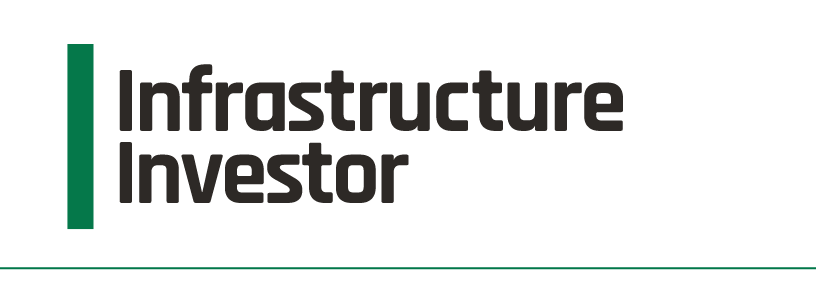The world’s 75 largest institutional investors allocated a total of $723 billion to the asset class, this year’s GI 75 ranking reveals, underscoring the broader trends witnessed in the infrastructure investment industry throughout 2023 – demonstrating the asset class’s continuing appeal.
TOP 10 INSTITUTIONAL INVESTORS
| Rank | Institution | HQ | Infrastructure allocation ($m) |
|---|---|---|---|
| 1 | Caisse de dépôt et placement du Québec (CDPQ) | Quebec City | 45,134 |
| 2 | Abu Dhabi Investment Authority (ADIA) | Abu Dhabi | 44,280 |
| 3 | CPP Investments | Toronto | 35,131 |
| 4 | National Pension Service of Korea (NPS) | Jeolla-bukdo | 32,874 |
| 5 | APG Asset Management | Amsterdam | 29,805 |
| 6 | Ontario Teachers’ Pension Plan | Toronto | 29,598 |
| 7 | AustralianSuper | Melbourne | 27,355 |
| 8 | Ontario Municipal Employees Retirement System | Toronto | 27,182 |
| 9 | Allianz Group | Munich | 23,734 |
| 10 | PSP Investments* | Ottawa | 22,170 |
*Allocation as of date other than 31 December 2023
INSIDE THE GI 75
Meet our expanded Global Investor 75
INFRASTRUCTURE INVESTOR GI 75 | METHODOLOGY
The ranking is based on the fair value of investors’ private infrastructure investment portfolios both through third-party managed investment vehicles and direct investments. This fair value is measured at a single point in time for all investors to provide an apples-to-apples comparison. For the 2024 ranking, this is 31 December 2023. This is a ranking of capital allocators and excludes assets managed on behalf of third-party investors.
What counts?
Infrastructure: The definition of infrastructure investment, for the purposes of this ranking, is investments in man-made facilities and/or assets that play a critical role in any given economy. This can be segmented further into five broad types: transportation (railways, roads, ports, and airports), energy/renewables (generation and distribution), telecommunications (digital infrastructure, data centres), utilities (water, wastewater, waste management) and social infrastructure (schools, hospitals, and government buildings). Assets must be tangible and physical, whether existing (brownfield) or those in the development phase (greenfield) that are expected to exhibit stable, predictable cashflows
over a long-term investment horizon. Institutions’ portfolios are measured at fair value or
NAV.
Infrastructure debt vehicles: we consider equity investments into infrastructure vehicles as long as the institution includes these as part of its infrastructure portfolio.
Capital invested through the following structures is included:
• Funds and funds of funds managed by a third party (both open-end and closed-end)
• Direct investments (equity investments into infrastructure projects)
• Co-investment vehicles
• Separately managed accounts
• Joint ventures
What doesn’t count?
Non-proprietary capital: this is a ranking of capital allocators and we do not include capital raised or managed on behalf of third-party investors. However, specialist asset managers with full discretionary management of public pension portfolios are considered for the purposes of this ranking.
Uncalled capital: this ranking excludes any capital that has been committed but not yet
been called by a fund manager.
Direct debt investments: we exclude any form of infrastructure debt origination for the purposes of this ranking.
Expected commitments: we do not count pending or future commitments and investments or the uncommitted portion of an institution’s target allocation.
Private equity: we distinguish between private equity energy and infrastructure energy and only consider the latter. Private equity energy includes investment into energy companies, investing in exploration and production (upstream) assets, and investments that tend to carry greater risk. Infrastructure energy includes investments in midstream and downstream assets (power generation) and renewable energy assets, such as oil and gas pipelines, oil terminals, wind farms, and solar parks.
Listed infrastructure: this is a private markets ranking, and commitments made to listed
infrastructure vehicles are not included.
Real estate: any property used for commercial/business purposes such as offices, hotels,
retail, and industrial. Also, multifamily/apartment properties and portfolios of single-family
houses assembled via an institutional platform are excluded.
Hedge funds: as these primarily target liquid securities or trading strategies.
Natural resources: investments either directly or through funds into natural resources assets (agri, timber, etc)
Infrastructure Investor’s Research & Analytics team seeks to communicate directly by phone and email with investors to find out the fair value of their infrastructure portfolio as previously described. In the absence of primary data, the team gathers data from secondary sources and seeks to validate the researched figure with the investors themselves before publishing the final list. For further clarification, contact Wassyl Abdessemed – wassyl.a@pei.group
INFRASTRUCTURE INVESTOR GI RANKING | PREVIOUS YEARS
OTHER RANKINGS
In addition to the Global Investor 75, Infrastructure Investor also compile other infrastructure investing rankings.
What’s more, our sister titles also produce their own industry rankings covering private equity, private debt, and private real estate.
To view the latest rankings from Infrastructure Investor, plus those from Private Debt Investor, Private Equity International and PERE, simply navigate through the sections below:
LATEST HEADLINES
SEEN OUR DATABASE?
Infrastructure Investor’s comprehensive database is full of intelligence relating to funds being raised worldwide, with key information on target sizes and strategies used.
Track investment appetite and access contact details of over 4,000 fund managers and investors, helping to bring together investors and managers with matching interests.































